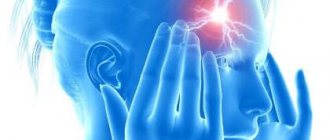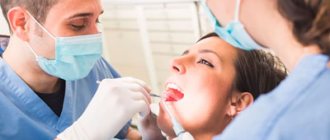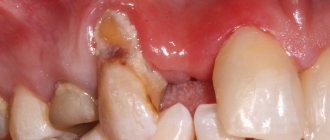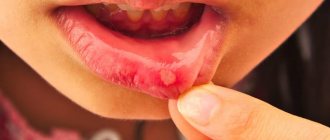Treatment of the oral cavity is the area of expertise of the dentist. Therapy may include various techniques, as well as folk remedies, depending on what ailment has been diagnosed. Treatment of the oral mucosa and teeth is carried out in stages. At the first stage, the condition of the oral cavity is diagnosed through a visual examination and X-ray diagnostics. The second stage is preparing the oral cavity for treatment. It consists of professional hygiene - cleaning teeth from hard stones, as well as from soft plaque. Next, therapy is prescribed based on the stage of the pathology and the severity of the clinical picture.
Who is a periodontist?
A periodontist is a highly qualified dentist with a higher medical education who specializes in the correction and prevention of pathologies of soft tissues that fix segments in the jaw bone. The concept of “periodontium” includes:
- mucous membranes that line the surface of the mouth;
- soft gum tissue surrounding the segments;
- periodontium is a thin layer of connective tissue between the alveolar process and the cementum of the tooth;
- dental cement - mineral tissue surrounding the root;
- alveolar process - a dental bed penetrated by capillaries and nerve endings.
Therapeutic measures
Treatment of oral diseases requires an integrated approach. It is important not only to treat the pathology, but also to prevent its recurrence in the future. This is achieved through timely professional oral hygiene, as well as maintaining an appropriate level of hygiene at home.
Treatment of diseases of the oral mucosa involves the prescription of certain pharmaceutical agents with antibacterial, antiseptic and wound-healing effects. For example, for stomatitis, the use of Stomatidine has a good effect. Drugs for the treatment of the oral cavity are selected exclusively by the attending physician.
If caries is present, a filling is indicated. If pulpitis occurs, then the carious tissue is removed, then the nerves are removed and the pulp chamber is cleaned. The cleaned tooth roots are treated with antiseptics and filled. Next, a filling or a crown made of metal ceramics or metal-free ceramics can be installed.
What diseases does a periodontist treat?
The area of expertise of a periodontist includes the treatment of gum diseases that have developed in periodontal tissues. The most common pathologies:
- Gingivitis is an inflammatory process of the periodontal soft tissues that occurs without disruption of the periodontal ligaments.
Only the gums are involved in the pathology. The first signs of the disease are bleeding and pain in the tissues surrounding the teeth. The pathology can occur in an acute form, which is also characterized by swelling, hyperemia of the mucous membrane, and itching. The chronic course of gingivitis causes virtually no discomfort, so a person is in no hurry to see a periodontist. Despite the asymptomatic course, the inflammatory process gradually progresses, complications arise - ulcerative-necrotic lesions, gum hypertrophy, detachment of mucosal areas, and others appear. The main cause of gingivitis is insufficient oral hygiene, which leads to the proliferation of bacteria. The periodontist usually prescribes conservative treatment, including removing plaque from teeth, using antiseptics, and antibiotics. - Periodontitis. Inflammatory periodontal disease, predominantly of an infectious nature. With periodontitis, destruction of the dentogingival ligaments occurs, and destruction of bone tissue develops. As the disease progresses, teeth begin to loosen and fall out. The disease is classified as polyetiological, since various reasons can lead to its development. Most often, the pathology develops due to the accumulation of bacterial plaque. In addition, periodontitis can occur due to poor heredity or gum injury. It often accompanies diabetes mellitus and is detected in hormonal disorders and other pathologies. A periodontist dentist, examining the mouth and jaw area, identifies the presence of periodontal pockets, bleeding, redness, swelling of the mucous membranes, and a heavy odor from the mouth.
- cavities. There is plaque on the teeth. Pus may be discharged from periodontal pockets. There is an exposure of the cervical zones of the segments, displacement of the teeth in the row, and their loosening. Treatment in the early stages is conservative, later - invasive.
- Periodontal disease. Non-inflammatory disease of periodontal tissues, characterized by a chronic course. The pathogenesis is based on circulatory dysfunction in the vessels supplying the periodontium. Violation of tissue trophism leads to the development of atrophic processes in the gum and bone tissues. Other causes of periodontal disease: malocclusion, smoking, decreased local immunity, hormonal imbalance, disruption of periodontal innervation, etc. The clinical picture of periodontal disease depends on the stage of the disease. Main symptoms: gum recession, pallor of the mucous membranes, increased spaces between units, their loosening. Bleeding gums are not typical for periodontal disease.
Treatment is aimed at strengthening the periodontium with the help of hygienic measures, drug therapy, and physiotherapy. If the degree is significant, the periodontist will suggest the surgeon
logical, orthopedic correction.
When is a visit to a gastroenterologist indicated?
Consultation with a periodontist is indicated for periodontitis, periodontal disease, and gingivitis. If gum inflammation and sensitivity are left untreated, you may lose your chewing organs. To prevent this from happening, you should contact your dentist. He will prescribe complex therapy.
It happens that you need to go not only to the dentist, but also to the gastroenterologist. Patients who have problems with the gastrointestinal tract should visit doctors. After all, gastrointestinal diseases often lead to stomatitis. If the disease is caused by duodenitis, stomach ulcers or gastritis, treatment should be prescribed by a gastroenterologist. Additional procedures include rinsing. The patient must observe oral hygiene rules. A balanced diet promotes recovery. Sweet, spicy, salty, and hot foods are excluded from the menu. It is easier to prevent a disease than to cure it. Strengthening the body has a positive effect on recovery. It is extremely important to get rid of ailments in a timely manner, especially if they are infectious.
When to contact a periodontist
Patients who come to see a therapist are most often sent to the periodontist's office. After listening to complaints, collecting anamnesis, examining the oral cavity and identifying symptoms characteristic of gum disease, he gives a referral to a highly specialized specialist who is more competent in solving such problems:
- mucous membranes bleed during hygiene measures after chewing
food ania; - mucous membranes have changed color and are swollen;
- discharge of pus is noticed;
- a putrid smell appeared;
- the sensitivity of units to external stimuli has increased;
- grayish-white spots appeared on the gums;
- The intersegmental spaces have widened and food debris has become more likely to get stuck in them;
- stony deposits have formed on the enamel of the segments, a soft coating in hard-to-reach areas that cannot be removed with home hygiene products;
- there is pain while eating;
- The volume of the gums has decreased, the necks of the teeth have become exposed;
- periodontal pockets have formed;
- the teeth began to loosen;
- the position of the segments in the row has changed.
The periodontist will conduct a thorough examination, determine the periodontal status, make a reliable diagnosis, and prescribe adequate treatment. The duration and range of manipulations depends on the neglect of the process.
After completing therapy, it is necessary to visit the doctor according to the prescribed schedule for a follow-up examination and, if necessary, repeat the course of periodontal intervention. Your periodontist will help you maintain the health of your gums so that your smile can once again be admired by others.
Where to take your child
Treatment of stomatitis in children is carried out by a pediatric dentist. In addition to the dentist, children are examined by a pediatrician. The aphthous type of disease in toddlers is severe. This disease requires constant monitoring by a doctor and adjustment of medications. The main thing is that adequate therapy is prescribed and the dose of medication is selected correctly. The age of the patient must be taken into account. If recovery is delayed, the little patient is referred to the following specialists:
- An immunologist to determine the state of the body’s defenses;
- To a hematologist, especially when aphthae appear, as they can occur when hematopoiesis is impaired;
- An infectious disease specialist who can identify the source of infection;
Remember that herpes is a dangerous manifestation. Children's behavior changes dramatically. They become anxious, whiny, restless, and may refuse their favorite food. Such symptoms cannot be ignored. The sooner you see a doctor, the faster your recovery will come.
Orthopedist
If the help of a therapist and periodontist did not produce results and the tooth could not be saved, it becomes necessary to install a prosthesis. This is what orthopedists do. At the first stage, their task is to obtain an impression of the tooth. Based on the results obtained, the dental technician makes a prosthesis. After this, the orthopedist first performs the so-called fitting, and then the final installation of the artificial tooth. There are many different options for prosthetics, from installing crowns to using removable jaws.
Konychev Evgeniy Alexandrovich
orthopedic dentist
More details
Turovets Alexander Igorevich
orthopedic dentist
More details
What is stomatitis
Stomatitis can be either an independent disease, which includes several varieties, or a symptom of another, more serious pathology. All stomatitis is characterized by inflammation of the oral mucosa. This is a fairly common problem that can occur repeatedly and in some cases be transmitted from the sick person to other people. There are no tests for the presence of stomatitis; the doctor determines this diagnosis based on examination data and the patient’s complaints. A smear can be taken afterwards to determine the causative agent of the disease. Having made conclusions, the specialist will give recommendations on how to treat stomatitis.
Symptoms
Signs indicating that a baby is suffering from stomatitis are divided into two types: local and general. It is not difficult to recognize them, especially if the baby already knows how to speak and can tell where he feels discomfort. If a baby is sick, the main symptom is general restlessness and crying. Parents should carefully examine his mouth and make sure that there is (or is not) an inflammatory process on the mucous membrane.
Local symptoms:
- blisters, sores or plaque on the inner surface of the lips, cheeks and/or tongue, pharynx;
- marks from biting, burns or scratches;
- swelling and redness of the mucous membrane next to the lesions;
- bad breath.
Are common:
- increase in body temperature (from slight to critical);
- increased size of lymph nodes;
- refusal to eat;
- lethargy;
- moodiness;
- nervousness.
Note to parents: symptoms can manifest themselves both complexly and individually. But the presence of even one of the listed manifestations of the disease is a reason to visit a doctor.
What remedies are recommended for the treatment of stomatitis?
- Mouth rinses . You can prepare a solution based on boric acid (one teaspoon per 150 ml of water). Another option is a solution with hydrogen peroxide (add one teaspoon to a glass half filled with water).
- Oils for medicinal lotions . Use sea buckthorn oil and propolis tincture. Soak a sterile cotton pad (or gauze) with the product and apply to the ulcer for a few minutes.
- The use of antiseptics to treat ulcers and mucous membranes. Be sure to consult your doctor when choosing a product.
Where can you go in Ivanteevka if you have gum disease?
If you need the help of a periodontist, you can contact the Sanident dental clinic, one of the best in Ivanteyevka, as confirmed by reviews from our satisfied patients. We employ only professionals with extensive experience who use modern treatment methods, the best equipment and reliable drugs. With us you can quickly and inexpensively restore health to your teeth and gums.
Complex dentistry "Sanident" is located at the following addresses:
- Ivanteevka, st. Novoselki, 4 (Ivanteevka railway station);
- Shchelkovo, st. Central, 80 (railway station Voronok).











